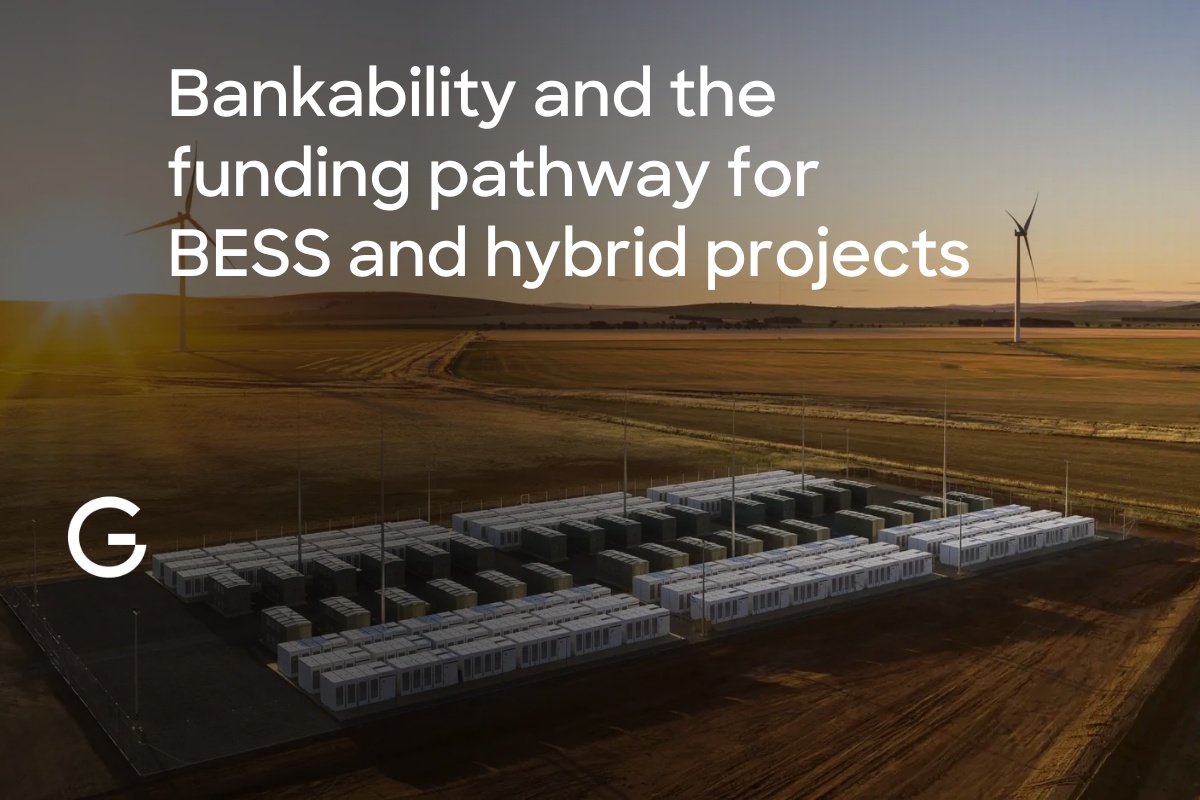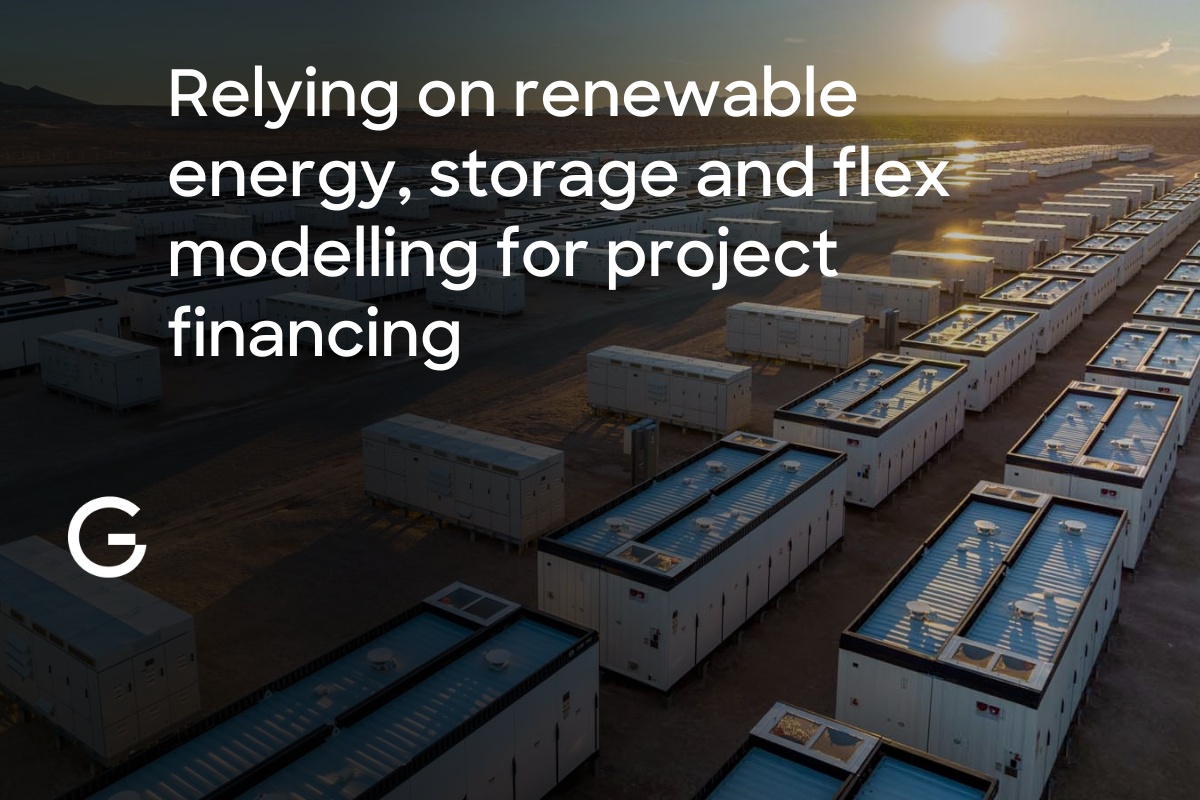Bankability and the funding Pathway for BESS and Hybrid projects

Large scale energy projects integrating battery storage require significant capital. While equity investors bring cash and risk appetite, debt typically funds 50-75% of project costs. But how do lenders today actually get comfortable with BESS and hybrid investments, what does it mean for project developers, and what the heck does the term “bankable” really mean?
The Bankable Revenue Forecast
Bankable isn't just a superlative that means "good" or "accurate". It's a specific term-of-art that relates to lenders' credit committee requirements for independent "bankable" revenue forecasts from their preferred and trusted consultants to support lending decisions. These forecasts must represent defensible "banking case" or "conservative case" scenarios demonstrating debt serviceability even in adverse conditions.
The consultants that lenders prefer will vary by market, with different consultants being considered “bankable” based on their history in that local market. They are typically long-term incumbents that lenders have worked with before on similar transactions, with that incumbency typically coming from a history of supporting debt funding of traditional renewable energy systems (stand-alone wind and solar parks).
Traditional renewable energy system investment
Bankability for traditional renewable energy system investment generally relied on just two main factors:
- Yield forecasts from “bankable” solar/wind simulation software (e.g. PVSyst for solar)
- Long-term energy price forecasts from “bankable” consultants (who lenders have worked with before on similar transactions)
The yield forecasts are created by project developers or their consulting engineers using trusted renewable resource data sets (wind speed and direction, and solar irradiance; often on the basis of some conservative “probability of exceedance”) and trusted plant simulation software that accurately models the efficiency with which electricity can be generated based on a physics model of the system being developed.
The energy price forecasts are developed by consultants using proprietary fundamental market models that incorporate load growth forecasts, gas price forecasts, transmission constraints, assumptions around retirement and construction of new transmission and generation resources, and transmission power-flow and market dispatch simulations.
So a “bankable” revenue forecast for a traditional renewable energy system is mostly just a matter of taking the product of those two factors (i.e. expected revenue is price times volume).
BESS and hybrid system investment
Projects integrating battery storage introduce a critical third “bankability” factor: project simulation and battery dispatch modeling.
This modeling must reflect realistic battery operating parameters, degradation profiles, and market participation strategies.
It must incorporate long-term price forecasts for ancillary services, simulation of short-term price forecasting and dispatch optimisation algorithms (mimicking how these assets would be optimised in real-life including co-optimising dispatch of energy and ancillary services, and estimating the value of trading between energy markets), taking into account complex interactions network connection limits, network congestion, and transmission and distribution costs, and, more complex revenue stacking than stand-alone renewable generation projects.
The role of the lenders’ consultants
Lenders will typically require an independent consultant be engaged who was not involved in the development process so they are not “marking their own homework”.
These consultants must provide the lenders their advice on a "reliance basis", meaning they accept legal liability for their analysis, and lenders can pursue claims if revenue forecasts were negligently prepared.
The lenders credit teams will thoroughly scrutinise the consultant's methodology and assumptions, but in most cases credit teams do not interrogate all the detailed modelling inputs and assumptions, which can be hundreds of parameters, or the raw simulation outputs, in part because these details are often not made available by the consultants, and in part because credit teams lack the technical expertise required. Instead they are relying on the consultant reputation and history supporting similar transactions.
Credit teams do stress-test key variables based on spreadsheet-based exports from the consultants modelling software (e.g. applying wholesale price or daily-spread discounts, reducing asset availability, or accelerating battery degradation) to firmly determine the downside revenue case, enabling them to establish minimum debt service coverage requirements and appropriate covenants to secure their investment.

Developer Modelling Requirements
Project developers need a very different perspective to lenders.
They require their own simulation and asset valuation models during the development process, separate from the conservative banking case modeling.
While lenders focus on downside protection, sponsors and equity investors need upside potential to justify their investment. This tension creates the negotiation boundary for financing terms, and reflects quite different priorities for project modelling.
Development-stage project models serve a number of critical functions:
- Optimising project design choices (site selection, grid connections requirements, asset sizing, power-to-energy ratio, hybridisation/co-location options, etc)
- Supporting the equity investment case with low, central and upside scenarios
- Testing different commercial strategies and contracting options across varied market conditions
- Rapid iteration of project design options and commercial models
The importance of volatility
Long-term price forecasts from “bankable” consultants and other market advisors typically remove some market volatility as a consequence of the market modelling methodologies they employ.
While this is appropriate for conservative banking case modelling, it’s not appropriate for understanding upside scenarios because BESS assets often make a significant proportion of their revenue each year from volatile market conditions and a relatively small number of low probability, high impact market events.
This means that development-stage modelling should integrate ‘backtesting’ against real market conditions as well as ‘forward testing’ using longer-term power price projections that may strip out volatility.
While these long-term price forecasts often remove volatility, that doesn’t mean they are always too conservative on prices. We have seen examples in recent years in some markets, such as GB, where much higher battery revenues were predicted by some consultants than was achieved. This demonstrates that these fundamental models are as much art as science, and there is need for both banks and developers to consider a variety of viewpoints.
Development-time decision making
While the same consultants who develop conservative banking cases can also provide the analysis to support the development process, consultant-led models often lack the transparency and flexibility developers need for rapid iteration and project decision-making.
This drives many developers to build internal modelling capabilities within their commercial teams, or to leverage specialised third-party commercial solutions like Plexos or Gridcog.
These self-built or commercial tools provide the granular control of project assumptions and the full transparency needed for development-stage decisions, while still producing outputs that can be validated against banking case models and against actual assets operating in the market.
While lenders may be happy to trust a black box model from a “bankable” consultant, developers need to fully own their models to be truly in control of their projects.
Contracted Revenue Trends
Lenders will require a debt service coverage ratios (DSCR) of 1.2x-2x, meaning the project must generate sufficient cash to cover debt payments plus a buffer. This ratio will be higher for fully merchant-exposed projects and lower for projects with fully contracted revenue.
Stand-alone renewable energy system projects typically obtain contracted revenue through power purchase agreements and renewable energy certificate schemes and other government support schemes. BESS can obtain contracted revenue through:
- Capacity market contracts
- Tolling agreements (both physical and virtual)
- Government support schemes for BESS
- Shaped PPAs, when paired with generation
This means that project modelling software used by developers should be able to incorporate these kinds of commercial structures.
It is important to note that the lenders will look closely at the capacity of the off-takers to pay for the contract. Governments and large utilities are ‘investment grade’ but smaller buyers of these contracts may not fully meet the lenders requirements, or may attract higher debt service coverage ratios or require other additional covenants in the financing agreement.
We are witnessing a shift toward financing fully merchant BESS projects in some markets as battery economics improve and revenue stacking strategies across multiple markets mature. Sometimes this can require the operator of the asset, potentially a third-party optimiser/trader to guarantee a revenue floor to the lender.
These deals typically feature higher equity contributions (e.g. 50:50 debt-to-equity), tighter covenants and higher debt coverage requirements, and reserve accounts to mitigate market risk exposure, so project developers may still seek to incorporate contracted revenue into their projects even if lenders can get comfortable with financing fully merchant projects.
Hybrid Project Trends
We're also seeing an increasing trend towards the development of hybrid or co-located projects (BESS + solar/wind, and in some cases co-location with large industrial loads), which can significantly enhance project economics. These arrangements offer several advantages:
- Increased contracted revenue opportunities
- Shared interconnection or power conversion infrastructure reducing capital costs
- Diversified revenue streams reducing revenue risk
- Open up access to renewable energy support schemes
However, these configurations substantially increase modelling complexity, and developers should look for modelling solutions that can support co-located project designs.
Revenue optimisation must account for generation intermittency, storage dispatch across multiple value streams, modelling of DC-coupling where relevant, and cannibalisation effects between assets (e.g. contention for power conversion or grid connection capacity).
This reinforces the need for sophisticated modelling capabilities that can simulate these complex interactions while maintaining transparency for decision-making and independent review/audit.
Conclusion
As the BESS market matures, successful developers increasingly recognise that relying solely on consultant models designed to support debt funding decisions creates significant competitive disadvantages.
The complex interplay between real market dynamics, project design options, new commercial structures, and dispatch strategy demands modelling solutions that are simultaneously robust, accurate, flexible, and transparent.
While some developers have attempted to build internal modelling capabilities, these often suffer from key limitations: they're resource-intensive to maintain, they lack accessibility and comprehensibility (only 1 or 2 team members know how to use them), they require redevelopment as the developer moves into new markets or as market rules change, and they typically lack the sophisticated optimisation algorithms needed for complex hybrid projects.
Specialised commercial solutions like Gridcog offer superior alternatives by combining the robustness and accuracy of consultant models with the flexibility and transparency developers need throughout the project lifecycle.
As merchant BESS and hybrid projects become increasingly prevalent, the gap between developers using sophisticated modelling platforms and those relying on consultant-only or basic internal models will only widen.
So while for lenders, bankable means a revenue forecast that meets the requirements of their credit committees, for developers “bankable” should mean an optimised a project design that is more likely to receive favorable financing terms, which requires modelling software like Gridcog.
Reach out for a demo if you’d like to find out more.







